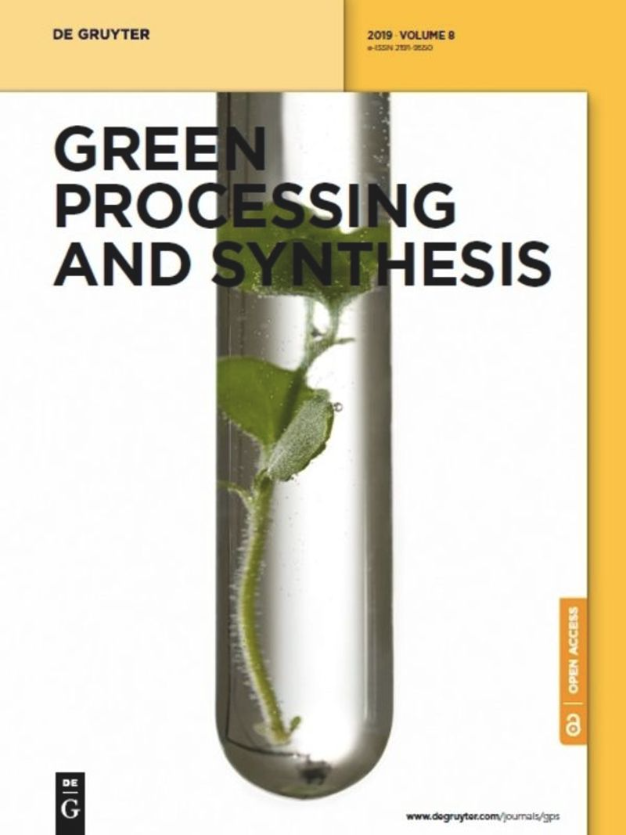绿色方法在纳米蜂胶生物合成中的作用和重要性以及蜂胶在治疗新冠肺炎大流行中的有效性
IF 3
4区 工程技术
Q2 CHEMISTRY, MULTIDISCIPLINARY
引用次数: 2
摘要
摘要蜜蜂最迷人的产品是蜂胶。它在牙科、皮肤科和耳鼻喉科有着巨大的作用。蜂胶作为一种重要的药物越来越受欢迎,这是因为它的成分具有抗炎、免疫调节、抗肝炎、抗癌、抗真菌、抗氧化、抗糖尿病和抗病毒活性。蜂胶的多种生物和药理活性引起了许多科学家的兴趣。许多技术,如气相色谱-质谱法、色谱法和光谱学,都被用来鉴定不同的蜂胶成分。类黄酮、酚酸及其酯是蜂胶最具药理活性的分子,已知会破坏病毒的复制机制,从而证实蜂胶的抗冠状病毒活性。本文的主要目的是深入了解蜂胶及其纳米颗粒日益增长的诊断用途,包括它们的化学分析、不同的生物活性以及化学标准化的必要性。在这篇综述中,我们重点关注了蜂胶的良好效果、其优化及其脂质体制剂作为新冠肺炎及其伴随的合并症的治疗干预。图形摘要本文章由计算机程序翻译,如有差异,请以英文原文为准。
Role and the importance of green approach in biosynthesis of nanopropolis and effectiveness of propolis in the treatment of COVID-19 pandemic
Abstract The most fascinating product of honeybee is propolis. It has an immense role in dentistry, dermatology, and otorhinolaryngology. The increased popularity of propolis as an important remedy is due to its constituents, which have anti-inflammatory, immunomodulatory, antihepatotoxic, anti-cancerous, antifungal, antioxidant, antidiabetic, and antiviral activities. The diverse biological and pharmacological activities of propolis have piqued the interest of many scientists. Many techniques like gas chromatography-mass spectrometry, chromatography, and spectroscopy are being used to identify different propolis constituents. Flavonoids, phenolic acids, and their esters are the most pharmacologically active molecules of propolis and are known to disrupt the replication machinery of the virus corroborating the anti-coronavirus activity of propolis. The main aim of this article is to provide an insight of the increasing theragnostic uses of propolis and its nanoparticles, including their chemical analysis, diverse biological activities, and the necessity for chemical standardization. In this review, we have focused at the promising effects of propolis, its optimization, and its liposomal formulation as a therapeutic intervention for COVID-19 and its accompanying comorbidities. Graphical abstract
求助全文
通过发布文献求助,成功后即可免费获取论文全文。
去求助
来源期刊

Green Processing and Synthesis
CHEMISTRY, MULTIDISCIPLINARY-ENGINEERING, CHEMICAL
CiteScore
6.70
自引率
9.30%
发文量
78
审稿时长
7 weeks
期刊介绍:
Green Processing and Synthesis is a bimonthly, peer-reviewed journal that provides up-to-date research both on fundamental as well as applied aspects of innovative green process development and chemical synthesis, giving an appropriate share to industrial views. The contributions are cutting edge, high-impact, authoritative, and provide both pros and cons of potential technologies. Green Processing and Synthesis provides a platform for scientists and engineers, especially chemists and chemical engineers, but is also open for interdisciplinary research from other areas such as physics, materials science, or catalysis.
 求助内容:
求助内容: 应助结果提醒方式:
应助结果提醒方式:


